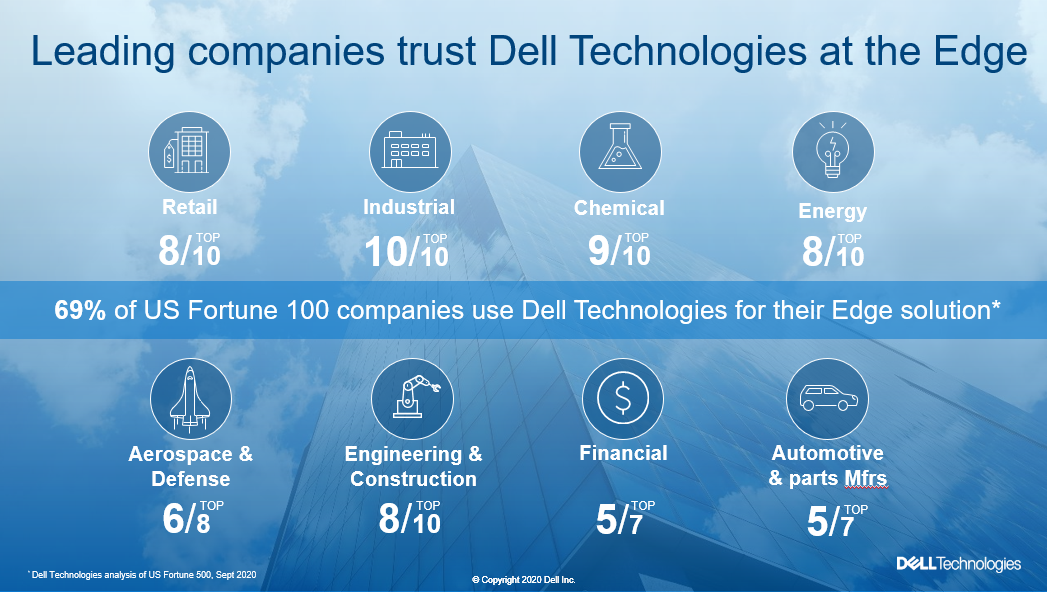Nowadays, a number of enterprises are turning to cloud edge computing to better handle and process the gigantic amount of data that edge devices initiate. Enterprises can have their welfares massively served once processing is shifted away from centralized data centers to edge locations. However, as the cloud edge computing resources for IT teams are being put to a portfolio of cloud infrastructure, the duty of maneuvering numerous clouds becomes unmanageable. Hence, to efficiently and effectively manage cloud-edge computing and multi-cloud infrastructure, more enterprises are resorting to Dell Technologies’ Edge Computing solutions.

As data is deemed as the core of the digital era and as a valuable asset within an organization, edge computing has gained momentum for practical and strategic basis. For instance, manufacturing and retail industries encounter a noticeable share of information distant from data centers and central offices. In order to ensure the full value of the captured information, companies need effective tactics of managing, interpreting, and utilizing it. Enterprises comprehend these points and are advancing in deploying the edge solutions for they are certain of the insights these data will generate in regards to improving yields, lowering costs, and improving predictive maintenance.
Tony Bartlett, Dell Technologies South Africa director of data center compute, tackles the essence of edge computing solutions versus that of the centralized approach. The former grants organizations a digital transformation that would facilitate decisions for cost saving, thus gaining a competitive advantage. Bartlett states that enabling technologies such as artificial intelligence and machine learning are leveraged in the cloud, yet exceptionally well suited to use cases at the edge. Moreover, AI is booming and invading an immense deal of businesses. With that said, machine learning, a branch of AI, demands very large data sets and specialized data power. So, it makes much sense for AI systems to learn and develop the job at the edge where the data is being generated.
Organizations not investing enough in technological advancements are exposed to the risk of being irrelevant and unsuited compared to the outer development. Devising and planning for the edge is hence imperative for organizations in the new digital era. The merge of operational technology and information technology systems and processes ensure the excelling of the edge. As this is an expansion put off the edge, systems management and operations are overwhelmed with pressure. Essentially, this is why the edge becomes an extension of the cloud.
In a nutshell, cloud edge computing is effectively an operating model that enables organizations to optimally manage their infrastructure applications and data in a consistent manner. So, for organizations that have not already started on the route of digital transformation, there is no better time than now to start with Dell Technologies. New edge computing offerings include:
- Dell EMC VxRail satellite nodes, designed to help automate day-to-day operations, such as lifecycle management and monitoring from a centralized location without the need for local technical and specialized resources.
- Dell Technologies Validated Design for Manufacturing Edge with Litmus, designed to help businesses connect, manage and orchestrate disparate industrial edge devices, data and applications across environments from factory floors to enterprise clouds—with no programming required.
- Dell EMC Edge Gateway, a 5G capable, fanless solution powered by 9th Gen Intel Core processors – helping companies securely connect and gain insights from multiple edge devices across disparate OT and IT environments.
- Dell EMC Streaming Data Platform (SDP) utilizes GPU optimization to ingest streaming video in lower latency and frame rate environments and support real-time analytics on Dell EMC VxRail and PowerEdge servers.
- Latitude 5430 Rugged and Latitude 7330 Rugged Extreme, designed to withstand harsh environments and use cases, and maintain the highest levels of performance and connectivity
- Dell Technologies Bare Metal Orchestrator, a software solution designed to allow service providers, including telcos to automate the deployment and management of hundreds of thousands of servers across geographic locations to support ORAN and 5G deployments. The new offering is the first solution from its Project Metalweaver initiative, which integrates Dell infrastructure solutions with VMware’s Telco Cloud Platform and Red Hat OpenShift. Bare Metal Orchestrator offers CSPs the tools to discover and inventory servers, bring them online and deploy software, regardless of where they reside in the network.
Move further with confidence and advance your success in a transformational journey with Dell Technologies as business happens at the edge.
Find out more about Edge Computing or join the conversation with us on Twitter.
